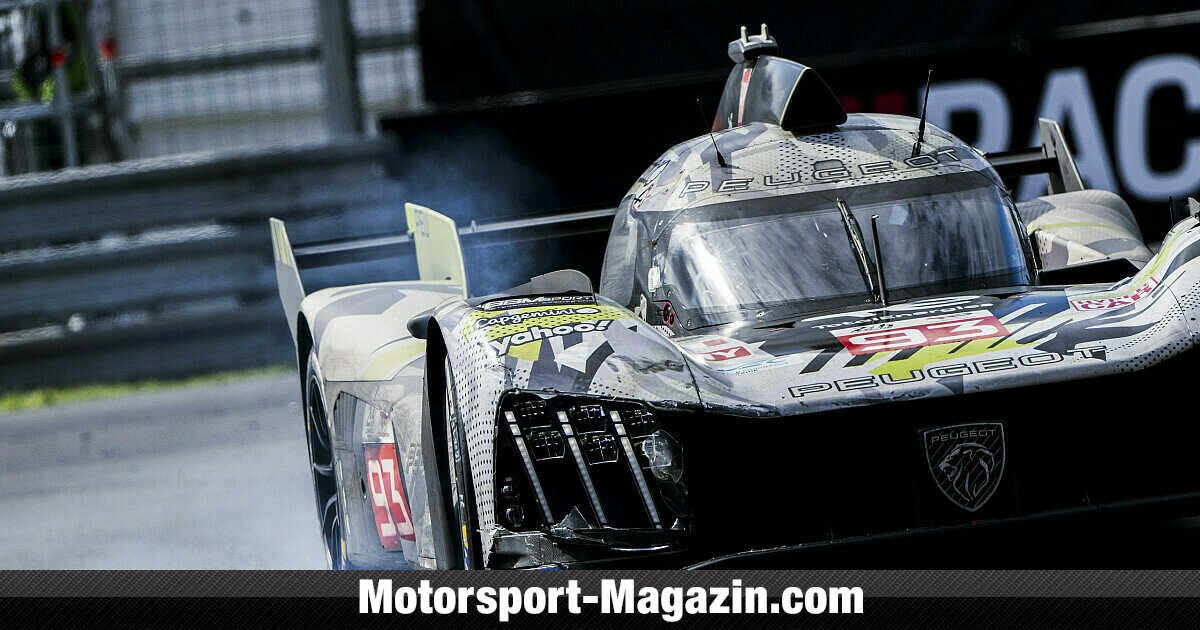Peugeot only played a minor role in the 24 Hours of Le Mans. But Nico Müller did find himself in the spotlight at times – unintentionally. Six hours before the end of the race, he drove his Peugeot 9X8 behind the safety car at the apex of the Indianapolis curve and crashed into the track barrier.
An embarrassing crash for the experienced Swiss, but one that was not his fault. After the race, Müller explained that a software error was responsible for the accident. “It was a combination. On the one hand, a crane drove over the track and then there was sand. That was what caused the slide,” said Müller.
Bug in Peugeot software causes accident
The skid was not the actual reason for the crash, but it did result in a problem with the software. “Because I lightly applied the brakes while counter-steering, there was a software glitch and this automatically blocked the front axle. That’s why I skidded into the gravel,” he said.
Stellantis Motorsport Director Jean-Marc Finot suspected that some oil from the #311 Whelen-Cadillac (Derani/Aitken/Drugovich) that had crashed at that spot earlier could have contributed to the slide. In the cockpit, Müller was immediately convinced that something had gone wrong technically. “Something like that has never happened to me before,” said the Formula E driver. The subsequent data analysis confirmed his suspicion.

Nico Müller: Stood like the biggest amateur in the gravel
The fault was probably in the Peugeot’s brake-by-wire system. As Müller explained, the brake load distributed between the front and rear axles was shifted 100 percent to the front axle. The blocked front axle was the result of this. The problem still existed immediately after the impact. “I then tried to drive out and the front wheels were still standing still,” Müller added.
Only after Müller had applied the brakes once did the Peugeot work properly again. The two-time DTM runner-up was able to continue the race without any damage. It was a brief embarrassing moment that did not have a major impact on the final race result. “The fact that all of this happened at the same time was like winning the lottery. The fact that I was standing in the gravel under the safety car like the biggest amateur looked really stupid,” the Swiss driver joked about the situation after the 24-hour race.
No WEC points: Peugeot has no chance in the fast corners at Le Mans
Müller finished in twelfth place in the Peugeot #93 with his two teammates Jean-Eric Vergne and Mikkel Jensen, two laps behind. On the straights they were up there with the competition, but in the numerous fast corners around the 13.626-kilometer track the 9X8 lost a lot of ground. The bottom line is that the car was about one to two seconds slower per lap than Toyota or Ferrari.
The Peugeot #94 (Di Resta/Vandoorne/Duval) finished one place further up and just missed the last point. Under normal circumstances it would have been enough for the one WEC point, but a slow zone shortly before the end of the race gave the Lamborghini #63 (Bortolotti/Kvyat/Mortara) a favorable pit stop, thanks to which the Italian brand was able to save around 40 seconds and overtake the Peugeot.
Müller after Peugeot crash: I was about to pack my suitcase
After Le Mans, Peugeot can at least boast that their car proved to be reliable and stable. “We didn’t rent a garage for anything. The car was so reliable that we didn’t even have to put it in the garage,” said a delighted Finot after the 24-hour race.
That must mean something, because Müller’s technical trip at low speed was not the only impact that the #93 Peugeot had to deal with in Le Mans. Mikkel Jensen was also involved in an accident. “Mikkel crashed so hard that I thought I could pack my bags and drive home. And when the car came back, everything was straight,” said Nico Müller, surprised.
